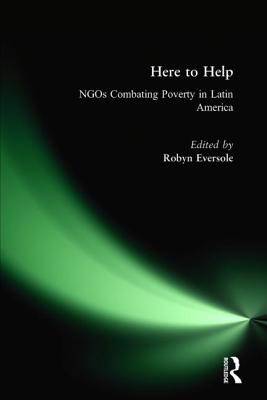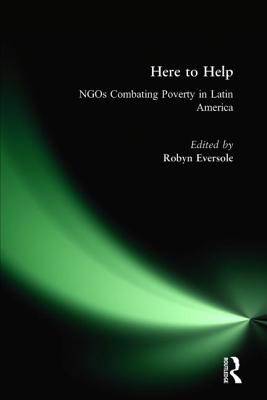
- Afhalen na 1 uur in een winkel met voorraad
- Gratis thuislevering in België vanaf € 30
- Ruim aanbod met 7 miljoen producten
- Afhalen na 1 uur in een winkel met voorraad
- Gratis thuislevering in België vanaf € 30
- Ruim aanbod met 7 miljoen producten
Zoeken
Here to Help: NGOs Combating Poverty in Latin America
NGOs Combating Poverty in Latin America
Robyn Eversole
Hardcover | Engels
€ 243,45
+ 486 punten
Omschrijving
Over six billion dollars in developmental assistance is funneled annually through non-governmental organizations (NGOs), yet little is understood about the nature of their relationship with communities and the real impact of their work. This book examines what role NGOs really play in fighting poverty in Latin America. Expert NGO professionals and scholars explore grass-roots relationships between international religious and secular NGOs and poor communities. They probe the power structures, cultural assumptions, dangers and possibilities that underlie NGOs' work. While fighting poverty is the mission of many NGOs, most are aware that they often fail to make things better, and, in fact, may make things worse. By providing a forum for Northern and Southern NGOs, donors, scholars, and poor people themselves, this book explores the causes and cures of poverty, and presses at the boundaries of our understanding of participatory development. It identifies both internal and external factors that influence the success of NGO projects, and moves beyond standard best-practice theory to probe more deeply the relationships that underlie poverty and how these relationships can be shifted to achieve solutions.
Specificaties
Betrokkenen
- Auteur(s):
- Uitgeverij:
Inhoud
- Aantal bladzijden:
- 284
- Taal:
- Engels
Eigenschappen
- Productcode (EAN):
- 9780765611062
- Verschijningsdatum:
- 28/02/2003
- Uitvoering:
- Hardcover
- Formaat:
- Genaaid
- Afmetingen:
- 162 mm x 230 mm
- Gewicht:
- 553 g

Alleen bij Standaard Boekhandel
+ 486 punten op je klantenkaart van Standaard Boekhandel
Beoordelingen
We publiceren alleen reviews die voldoen aan de voorwaarden voor reviews. Bekijk onze voorwaarden voor reviews.











